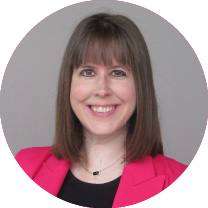The cost to board The Woodlands Park and Ride system could increase by $1 for every round trip beginning May 1.
The township’s board of directors tentatively approved an increase from $12 to $13 on Jan. 27. There will be a public comment period before the board is asked to approve the increase a second and final time in March.
The township operates three park and ride lots—in Sterling Ridge, Grogan’s Mill and near Research Forest Drive—that take riders from The Woodlands to destinations, such as Greenway Plaza, downtown Houston and the Texas Medical District.
The last increase to park and ride fees was in 2013 when it increased from $10 to $12. Analysis by the township suggested a fare increase would be necessary in 2016 because of factors, such as decreased ridership numbers and service provider cost increases.
“Analysis does show at this time that a fare increase is necessary to achieve our objective of having the park and ride program paid for solely by grant funds and bus fares,” township Finance Director Monique Sharp said. “The fare has not been increased since 2013, and at that time when the board looked at an analysis, it did show we may need to consider a $1 fare increase in 2015.”
In 2015, the board authorized the purchase of 25 buses for the park and ride program. Eighty percent of funding is provided by a Houston-Galveston Area Council grant while the remainder will be provided by an advance from the township’s capital reserve account. The new buses will lower operating costs for the program, but sufficient net revenue must also be generated to reimburse the money borrowed from the township’s capital reserve account.
There has been a drop in ridership as well, which indicates the $1 increase would not be enough to fully repay the capital reserve account in five years. About 727,000 passengers used park and ride services in 2013, and it is projected about 602,000 will use the bus system in 2016.
“Since 2013, ridership has dropped 15 percent and previous projections assumed ridership for 2016 would be the same,” director Mike Bass said. “We think we may have another
5 percent drop [in 2016]. We need to be able to have that additional dollar to cover the decline in service.”
Part of the proposal also includes increasing the time period to pay back the reserve from five to 10 years. After the capital reserve account is reimbursed, any additional revenue from the program would go toward future replacement of buses.
“We’ve tried every way in the world to minimize the impact on the user, and it’s important to understand a lot of dynamics,” director Jeff Long said. “About 45 percent of the users are non-Woodlands folks, and we’re trying to make sure we do not impact residents of The Woodlands. We’ve tried massaging it every way we can, and we came up with what we thought was the best solution.”





